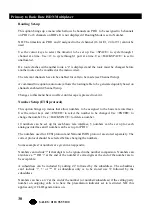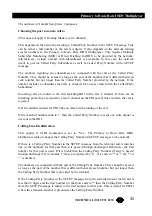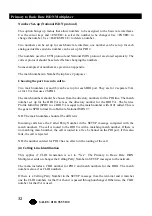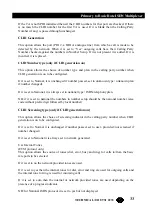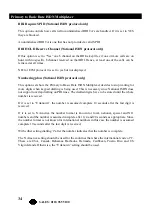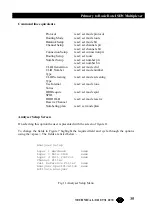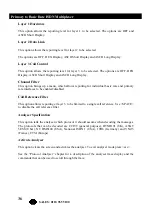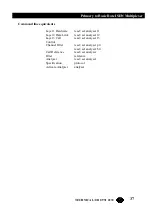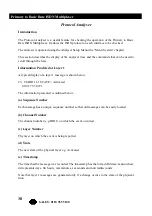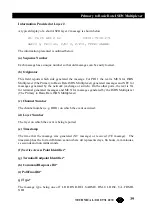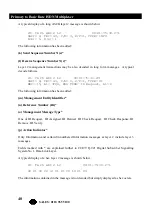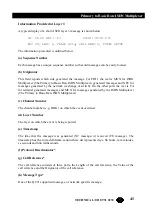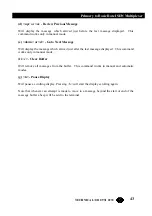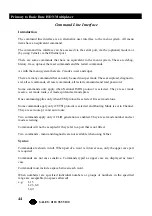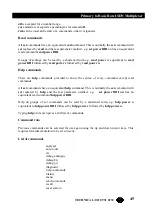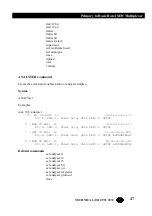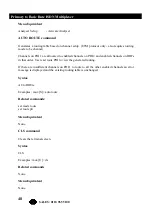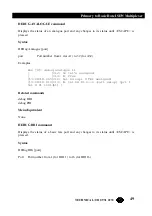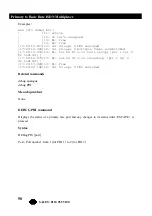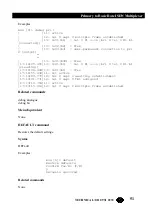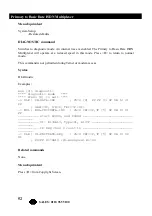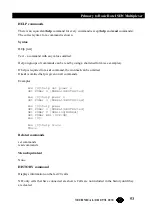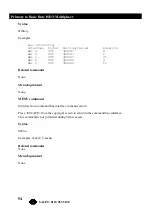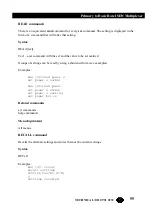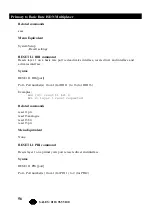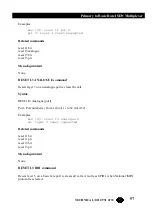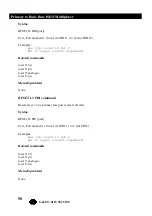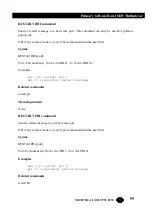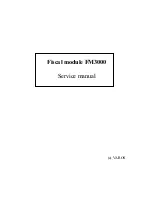
44
Primary to Basic Rate ISDN Multiplexer
SALES: 0118 965 5100
Command Line Interface
Introduction
The command line interface is an alternative user interface to the menu system. All menu
items have an equivalent command.
The command line interface can be accessed via the serial port, via the (optional) modem or
(by using Telnet) via the Ethernet port.
There are some commands that have no equivalent in the menu system. These are debug,
history, trace, upload, the reset commands and the restart commands.
As with the menu system there are 2 modes - user and super.
There are many commands that can only be used in super mode. These are upload, diagnostic,
swl, all set commands, all reset commands, all restart commands and read password.
Some commands only apply when National ISDN protocol is selected. They are set mode
reserve, set mode route, set mode spid and set mode plan.
One command applies only when ETSI protocol is selected. It is set mode tone.
Some commands apply only if ETSI protocol is selected and Routing Mode is set to Channel.
They are set route p ri and auto route.
Two commands apply only if CLID generation is enabled. They are set mode number and set
mode screening.
Commands will not be accepted if they refer to a port that is not fitted.
Two commands - menu and diagnostic are not available when using Telnet.
Syntax
Commands are shown in full. When part of a word is in lower case, only the upper case part
is required.
Commands are not case sensitive. Commands typed as upper case are displayed as lower
case.
Commands must include a space between each word.
When number(s) are specified individual numbers or groups of numbers in the specified
range are acceptable (no spaces allowed)
e.g. 1-15
1-2,3,6-8
1,4,9

